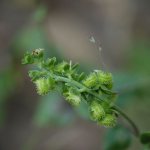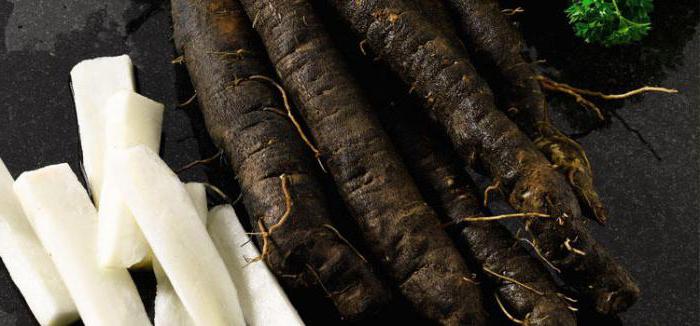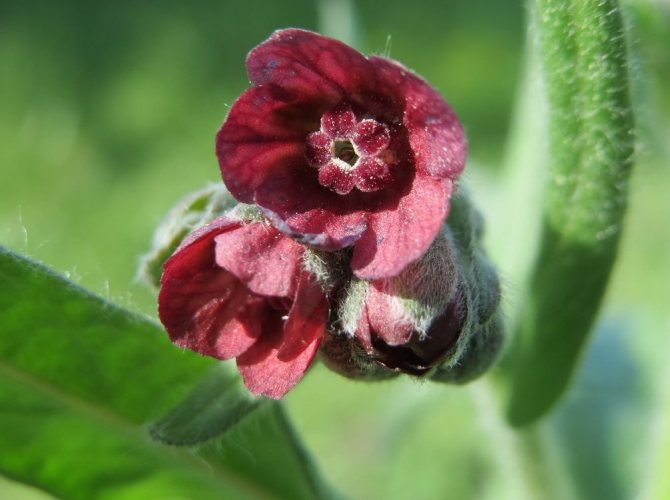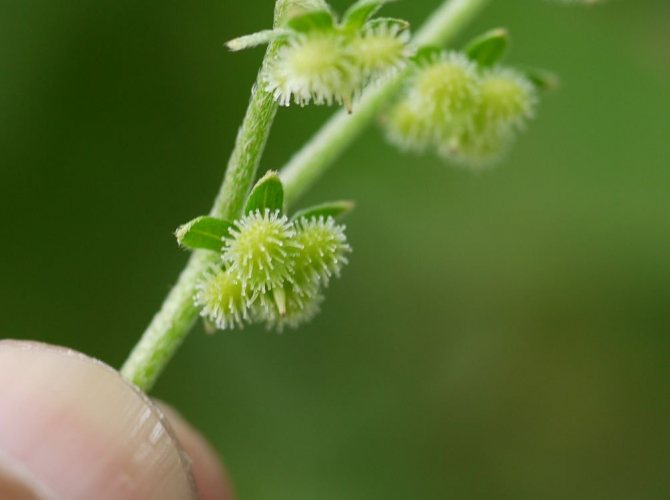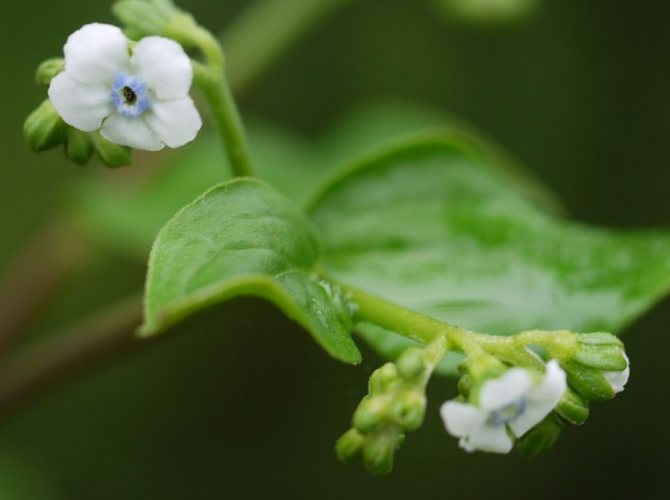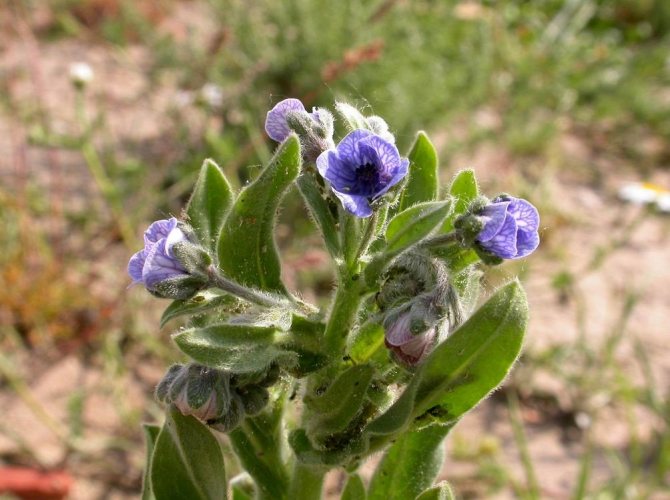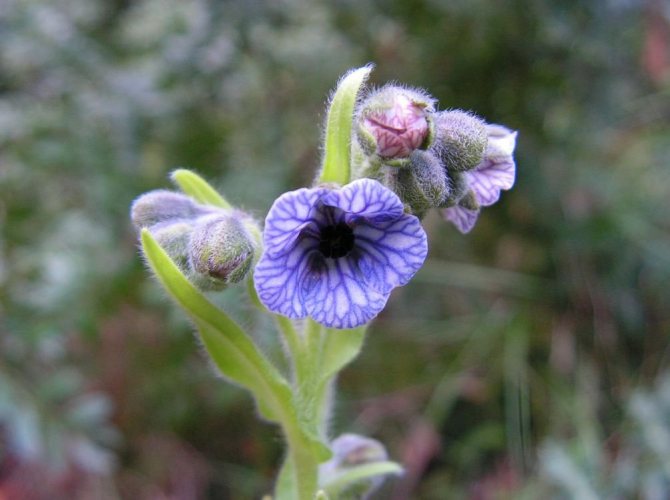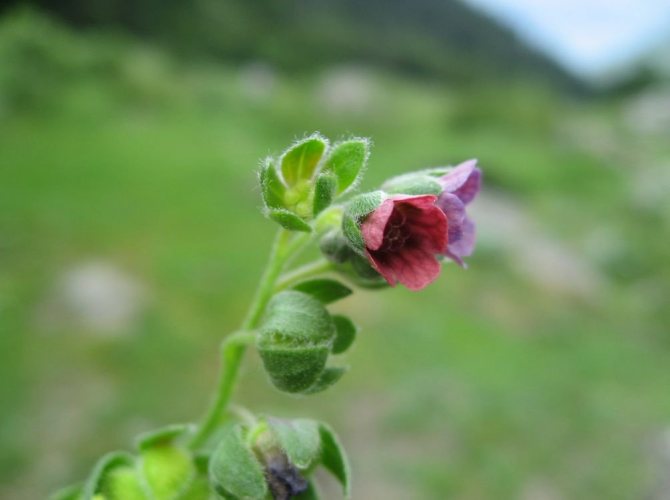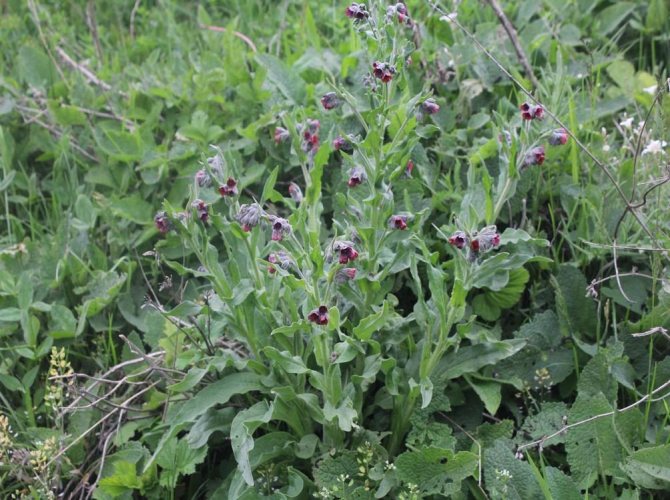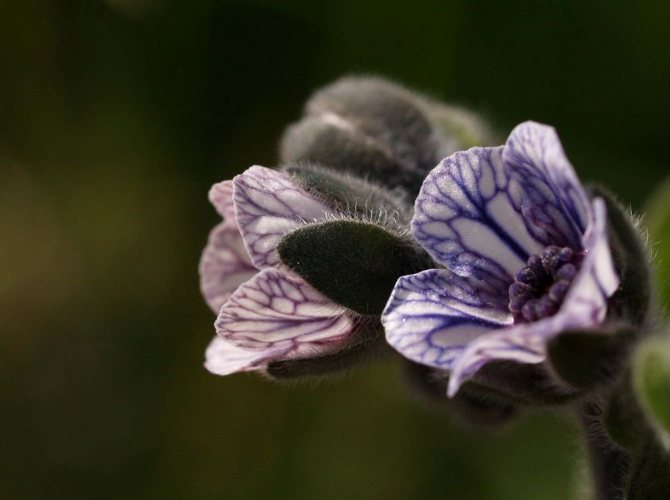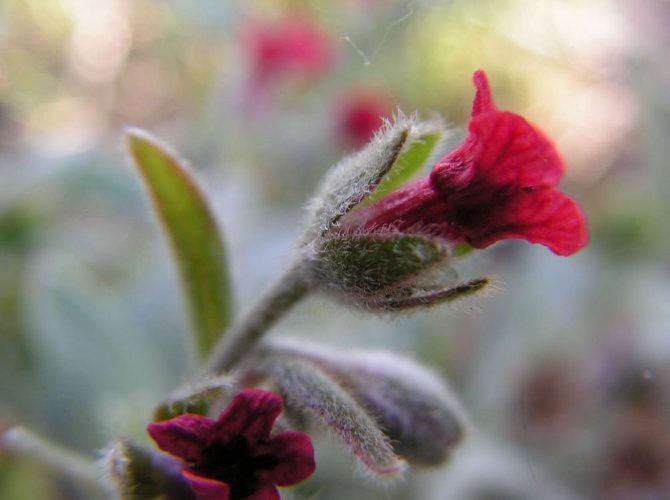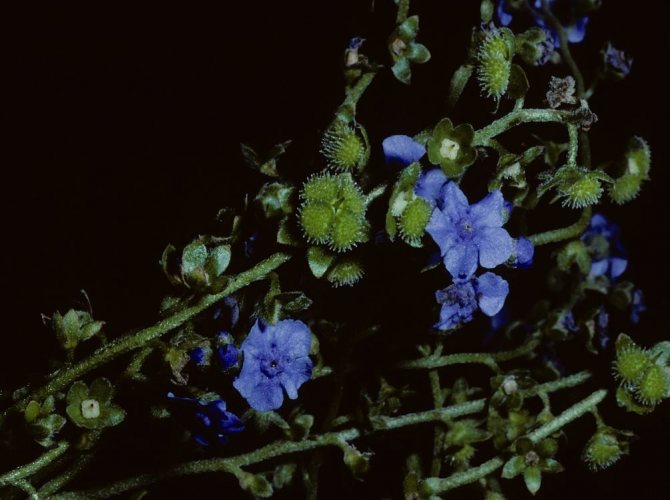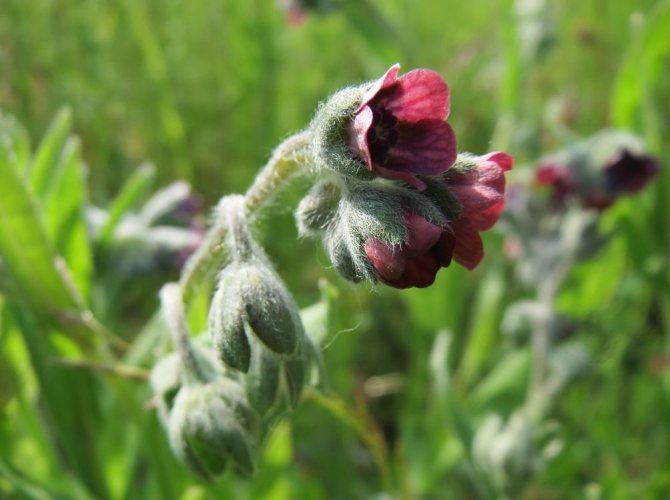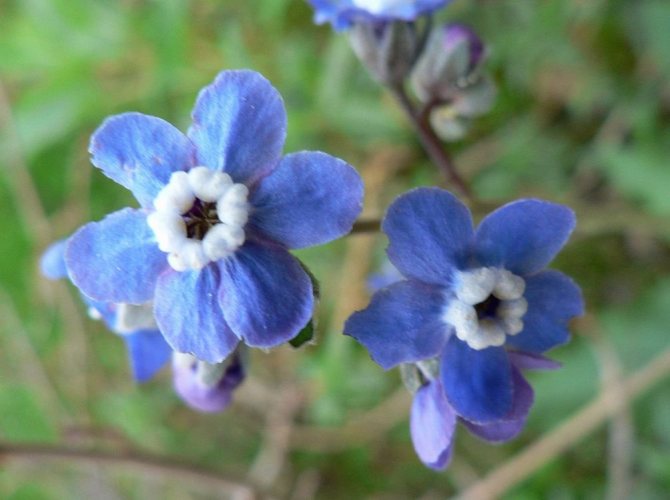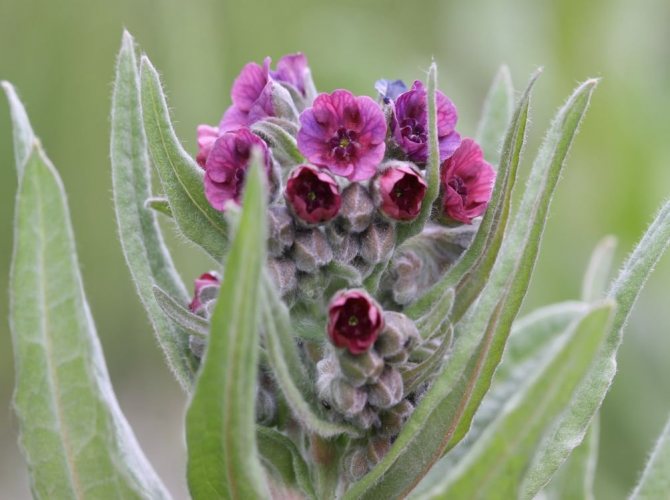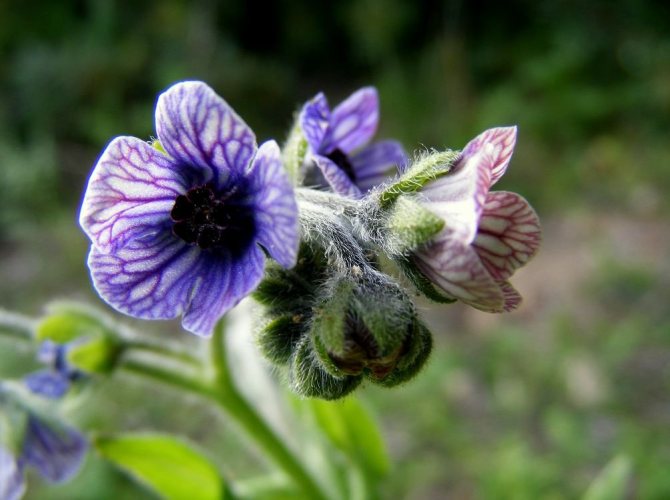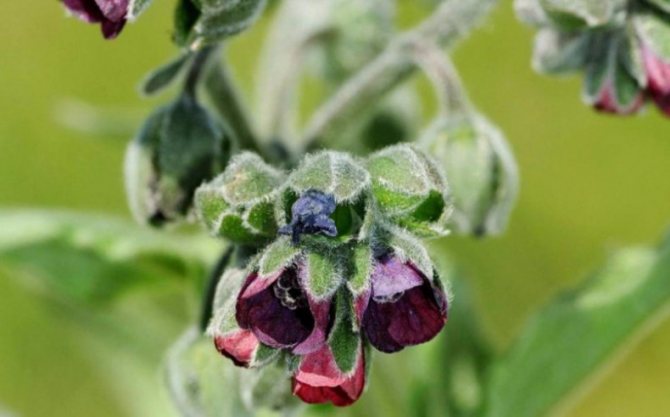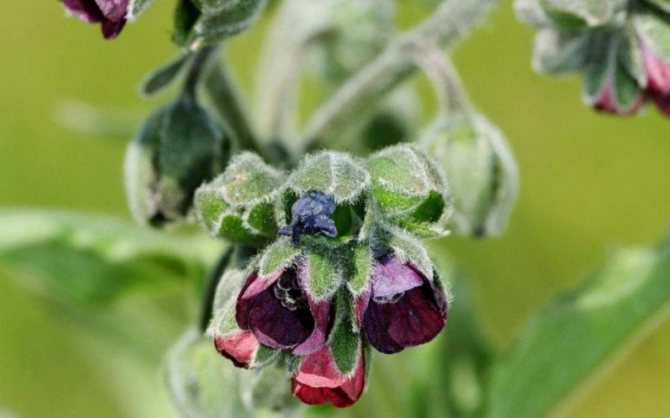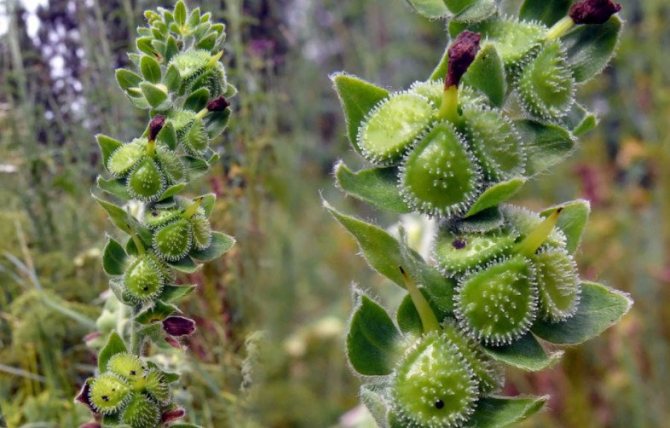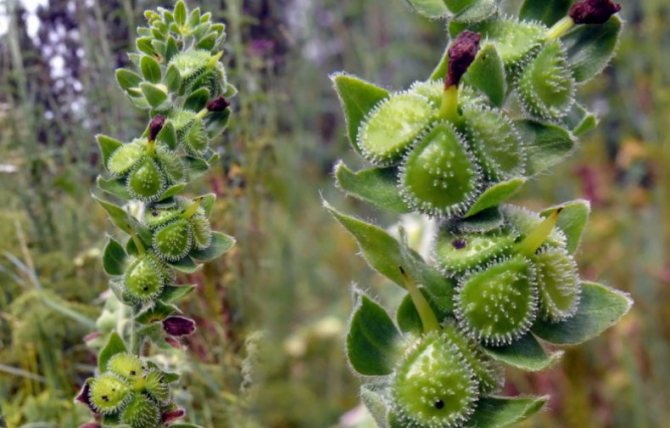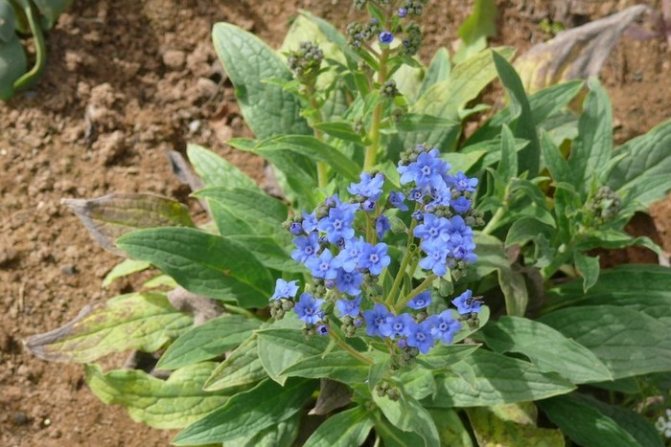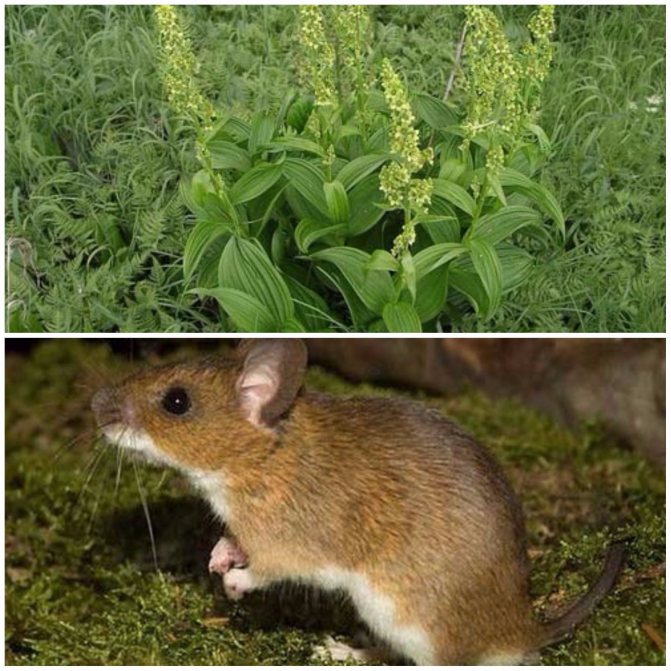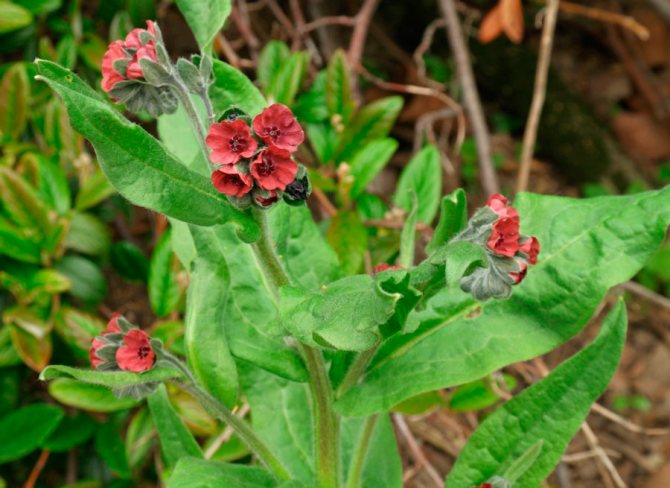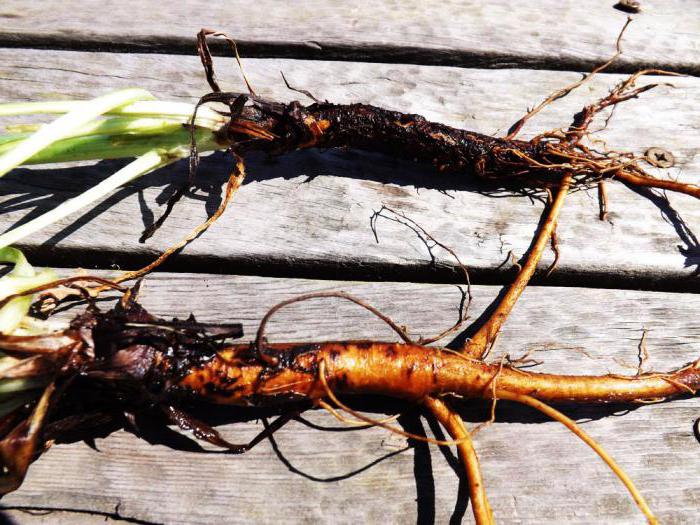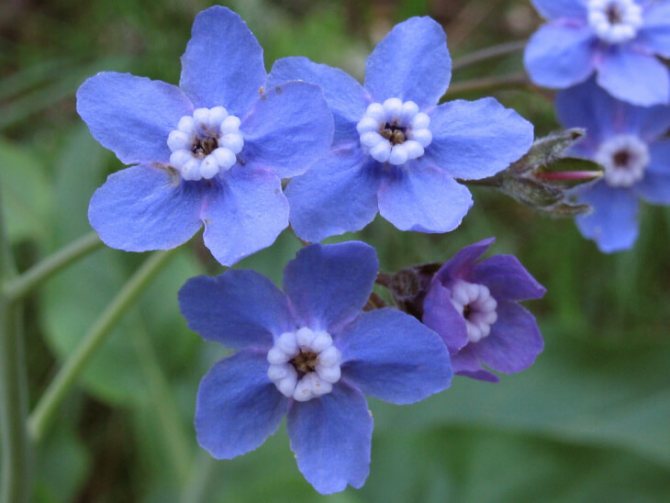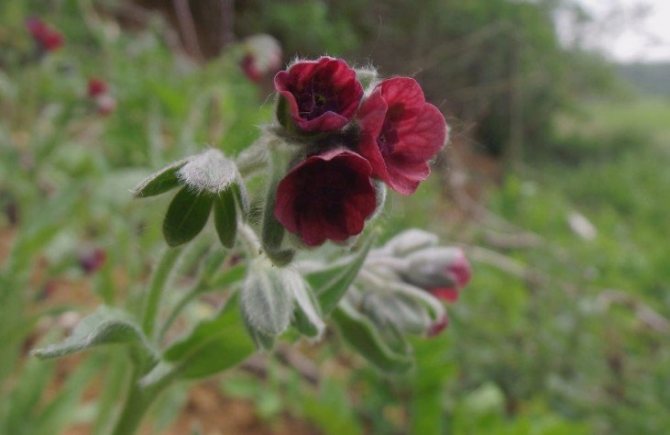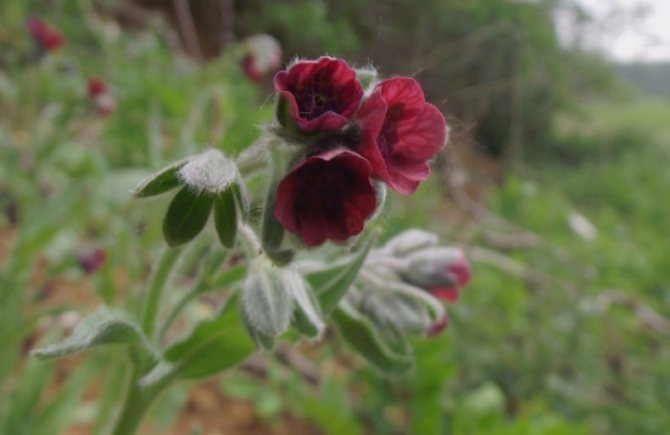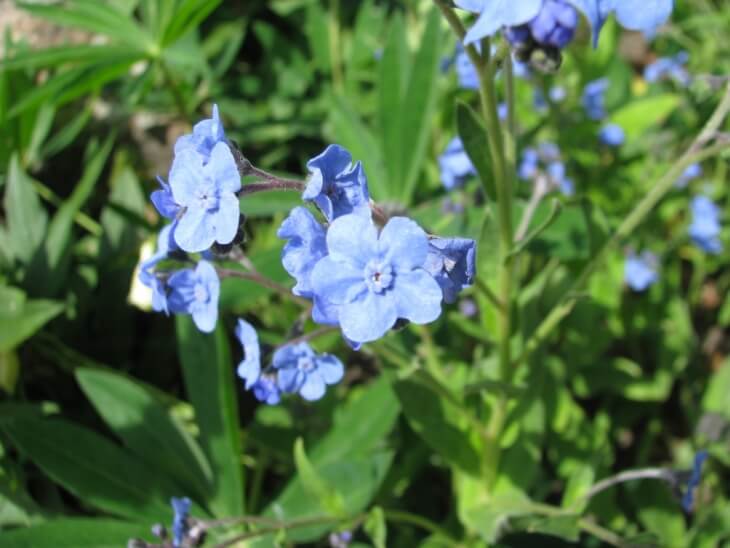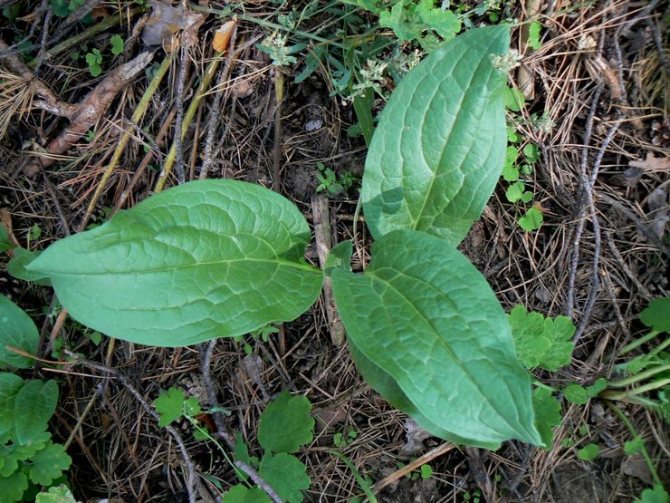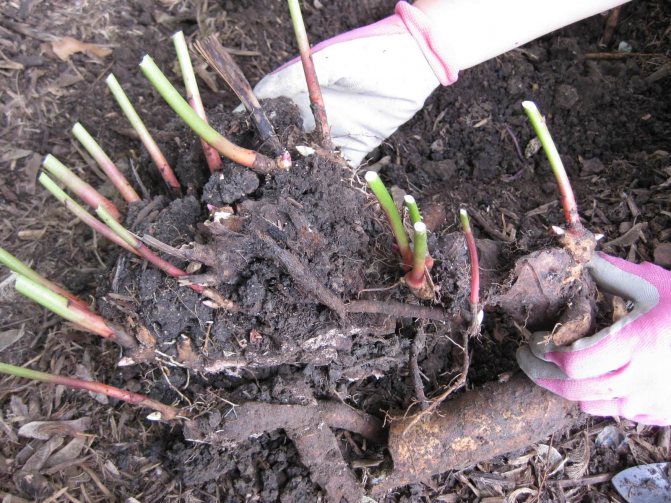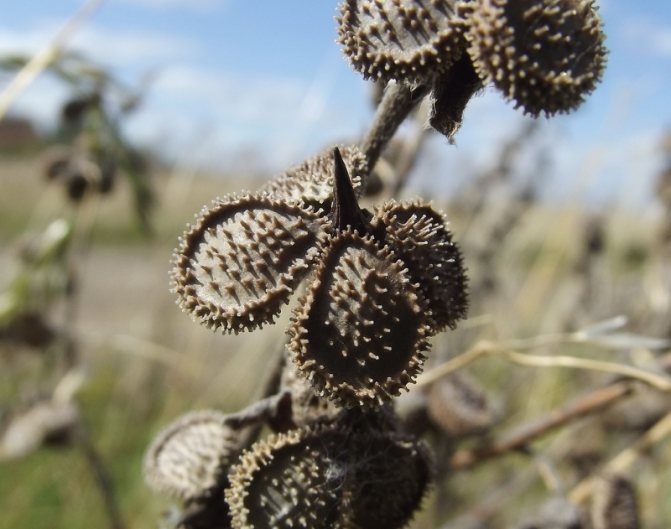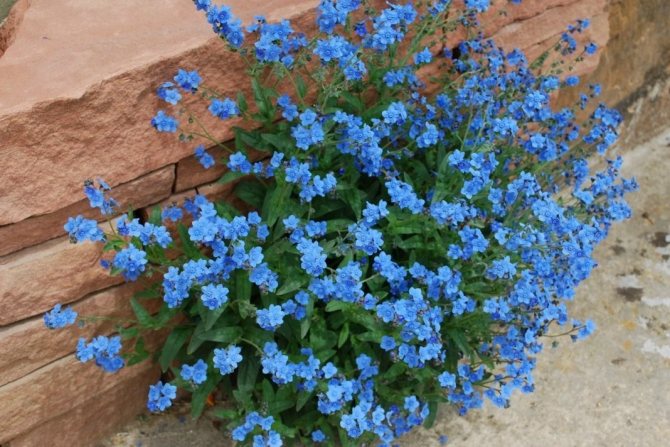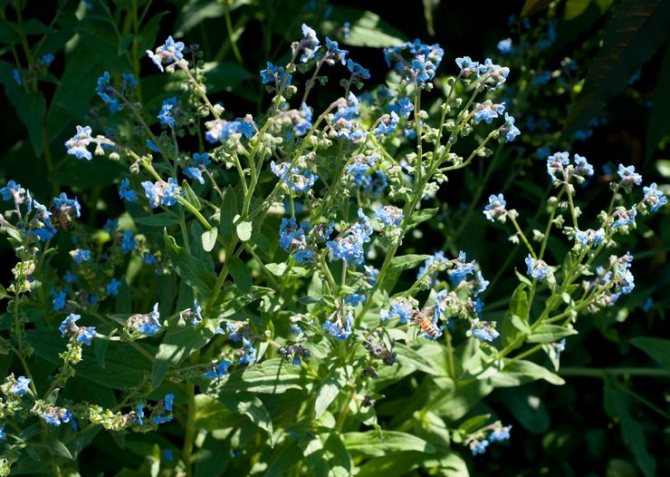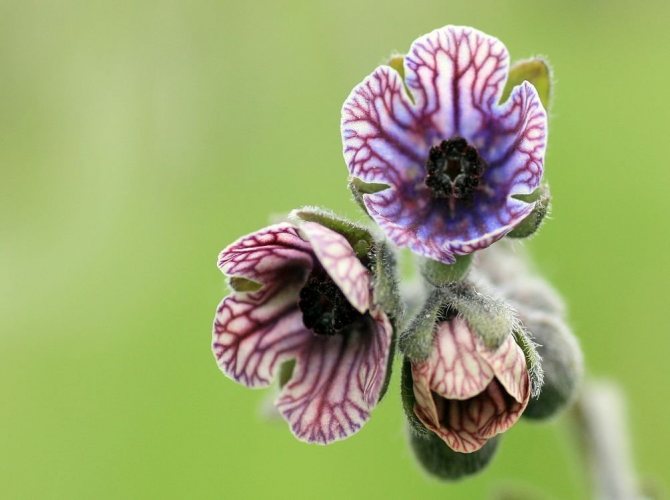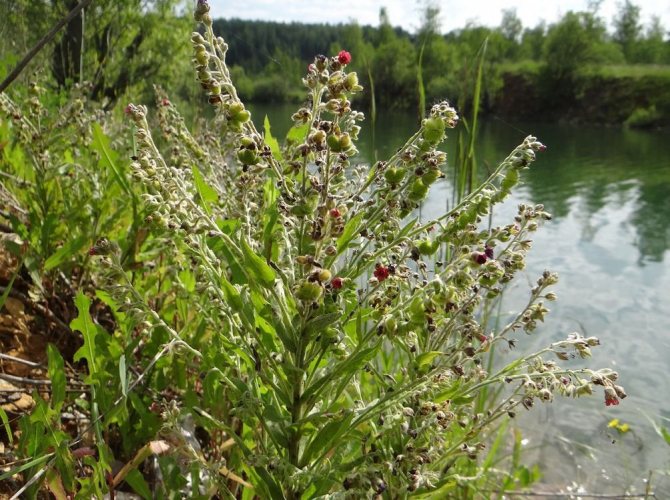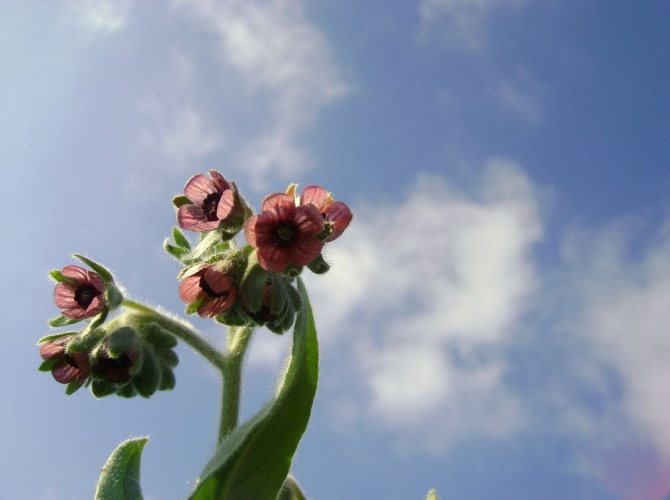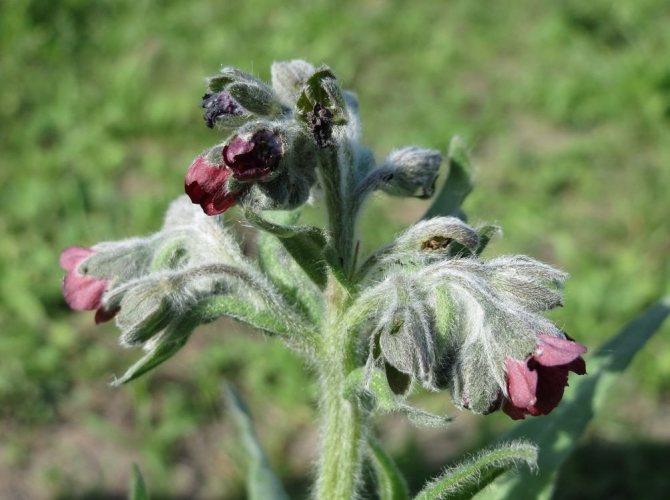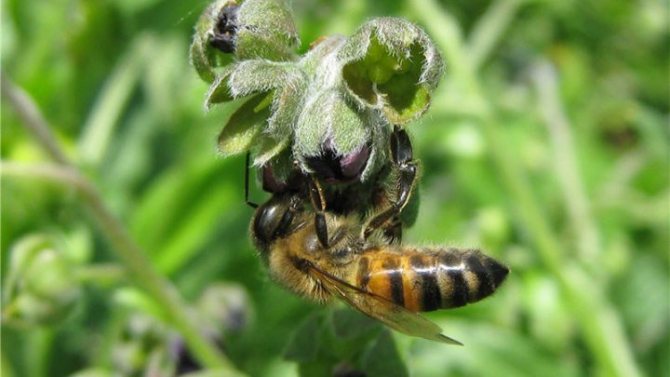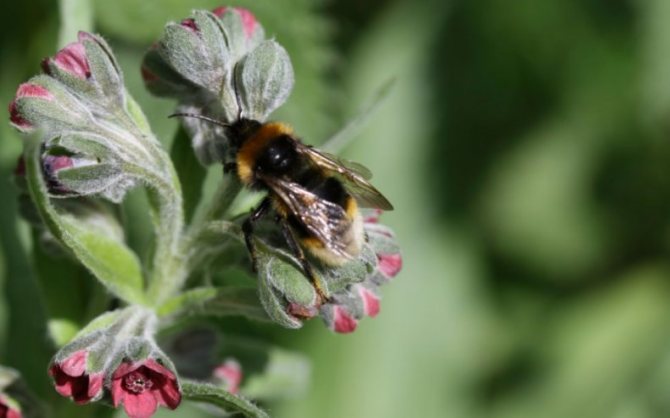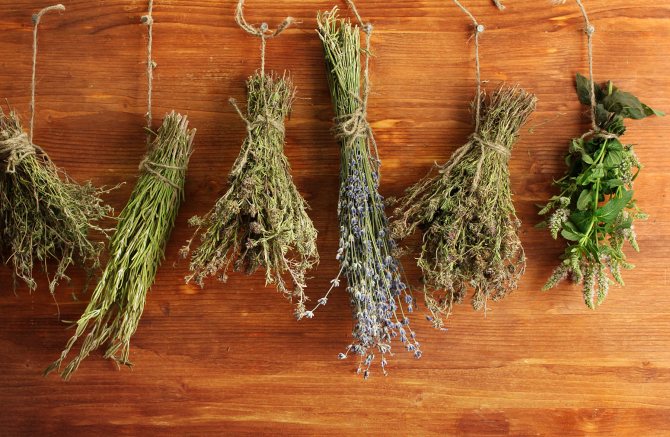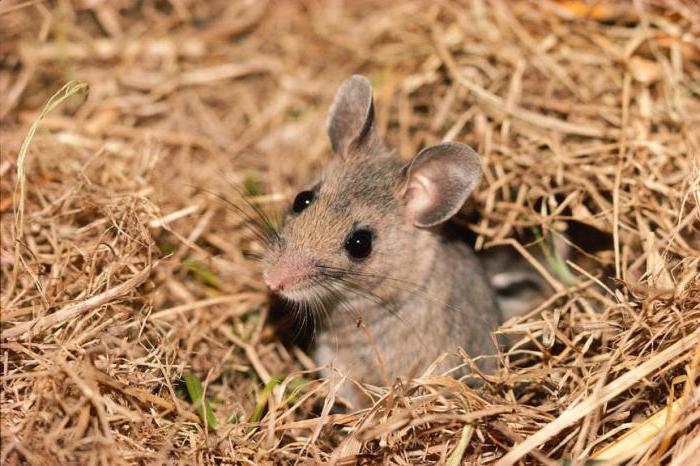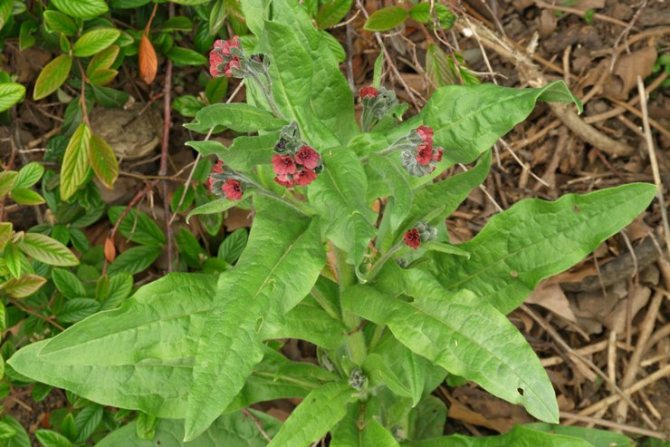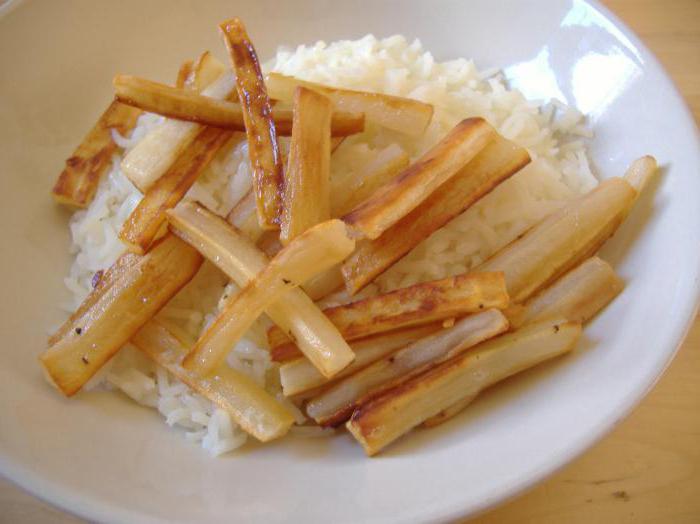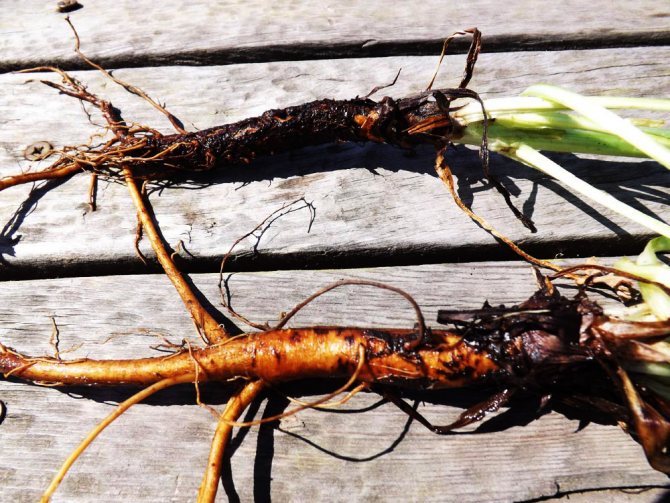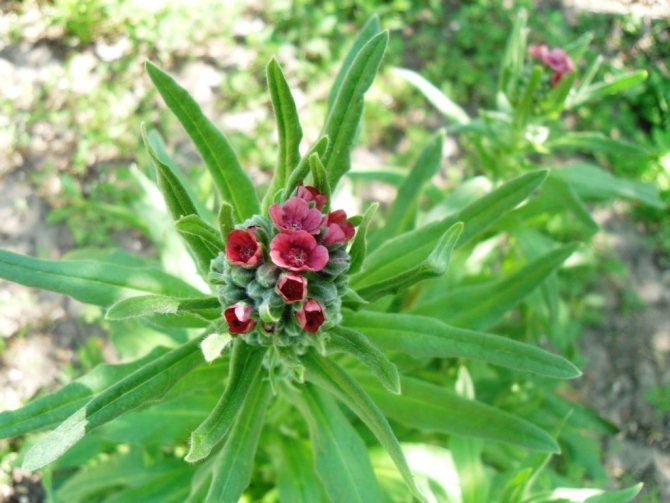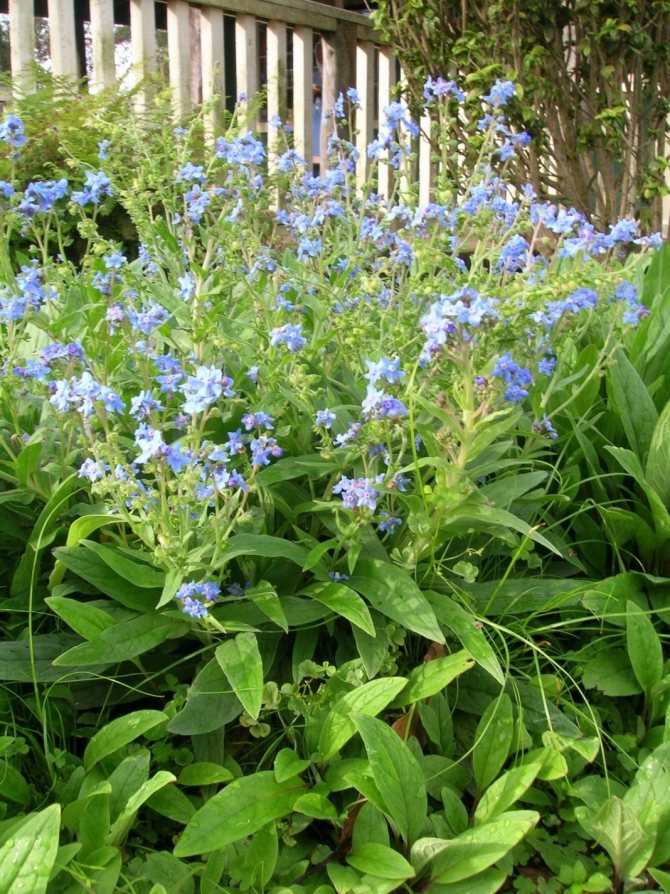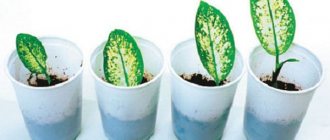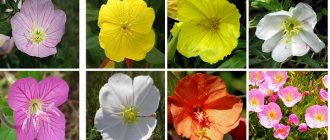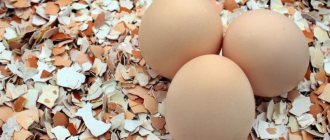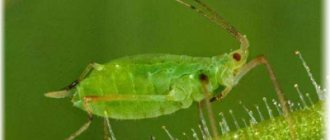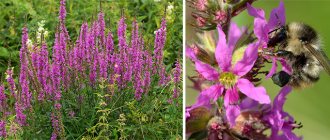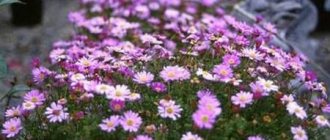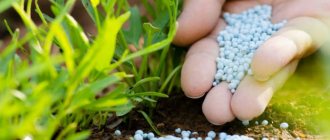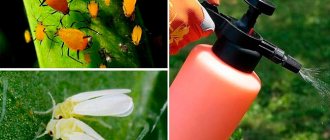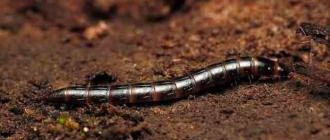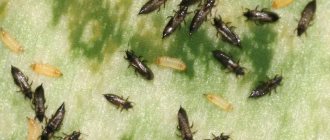Blackroot, or cinoglossum pleasant (Cynoglossum amabile), belongs to the Boraginaceae family.
Blackroot used to be popular, today it returns favor. It grows quickly and blooms profusely. Several shoots and several leaves on long petioles grow from a rather solid root. Leaves are sessile. New branches grow from the corners of the upper leaves. The main and lateral shoots form paniculate inflorescences. The flowers along the shoots have five petals, if not the color of the sepals, would be almost identical to those of the forget-me-not. Anglo-Saxons call the pleasant black root Chinese forget-me-not. Blackroot is a melliferous plant with no difficulty in pollination. Appearing in the wrapper of a flower cup, egg-shaped nuts covered with thorns act as seeds, the surface has many thorns, they easily attach to everything, it is difficult to remove from fleecy clothes or dog hair. Blackroot gives abundant self-seeding, will grow next year, if you do not weed out the seedlings.
Botanical characteristics
Blackroot is a herbaceous plant with an erect stem 40-100 cm high. The flower is fed by a tap rhizome 25 mm thick. It is covered with dark reddish brown bark. The shoot branches in the upper part, forming many lateral shoots, which are covered with bright buds during the flowering period. Stems and leaves are densely pubescent with a short gray pile.
On the stems there are bright green leaves, which, due to the silvery-gray villi, seem to be bluish. At the base of the shoot, the leaves have short petioles. The lanceolate or oblong leaf plate grows 15-20 cm in length and 2-5 cm in width.
At the end of May, small flowers bloom on the tops of the shoots. Long bloom lasts all summer. The buds are collected in panicles. At first, the dense inflorescence is greatly shortened, but gradually it stretches out and grows overgrown with new corollas. The flowers have a bright corolla of dark red, blue, pink, purple or blue-purple hue. A dense, closed calyx with a diameter of 5-7 mm ends with soft, strongly bent oblong petals. After pollination at the end of summer, the fruits ripen - oval nuts covered with many hooked thorns.
The juice of a fresh plant has a pungent unpleasant odor that resembles mouse urine. It is very poisonous, therefore, after working in the garden, you must thoroughly wash your hands, and also restrict access to the blackroot for animals and children.
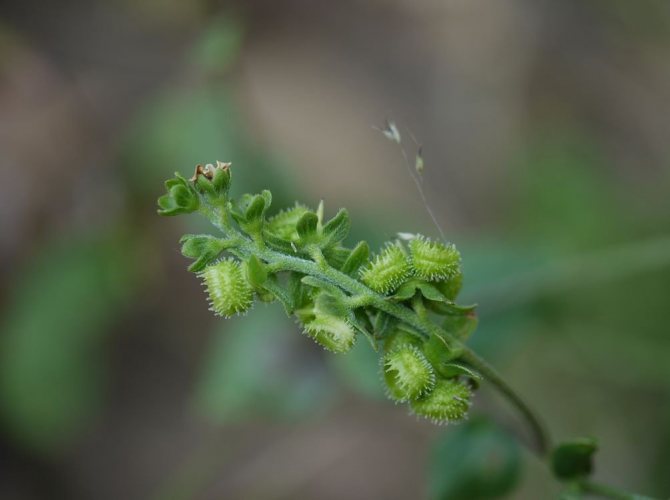
Black root: description
The sweet root is a member of the genus of perennial herbaceous plants. The stem is erect, its height reaches 75 cm, sometimes no more than 25 cm. The branches are dense, protruding. The base of the stem is covered with green leaves, which are slightly pointed in its lower part, with numerous veins.
The plant blooms in May and has a yellow, sometimes pink, fragrant reed flower. The black root of the scorzonera is cylindrical in shape, rather thick. The pulp is white, with a milky juice. The plant is self-pollinated.
Plant species
The blackroot genus includes 83 plant species. Some of them are especially popular.
Blackroot medicinal. Plants about 90-100 cm high have erect, highly branched stems. Along the entire height of the shoot, opposite lanceolate leaves are located, covered with felt pile. In June, at the ends of the shoots, paniculate inflorescences of lilac-red color bloom. Thin soft petals peep out of the closed funnel-shaped corolla. In the center is the peephole. The plant is used in folk medicine, as well as in the economy to combat mice, moles and rats.
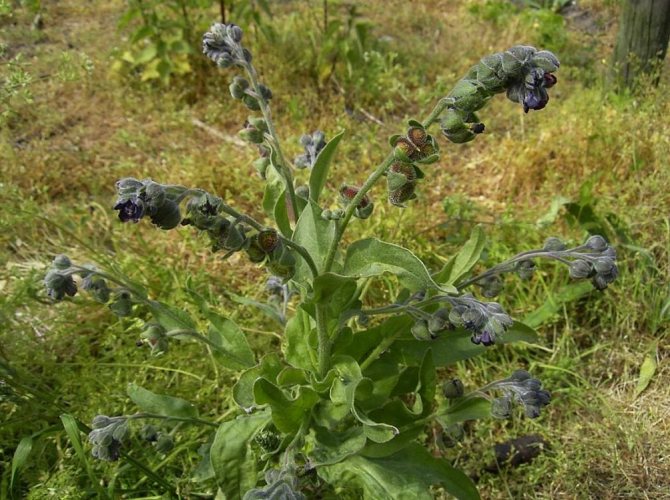

Blackroot medicinal
The black root is pleasant. An ornamental annual plant 40-50 cm high forms sprawling, spherical bushes. Bright green stems and foliage are lowered with a grayish pile. Flowers with a diameter of about 15 mm are painted in bright blue and are collected in paniculate, growing inflorescences.
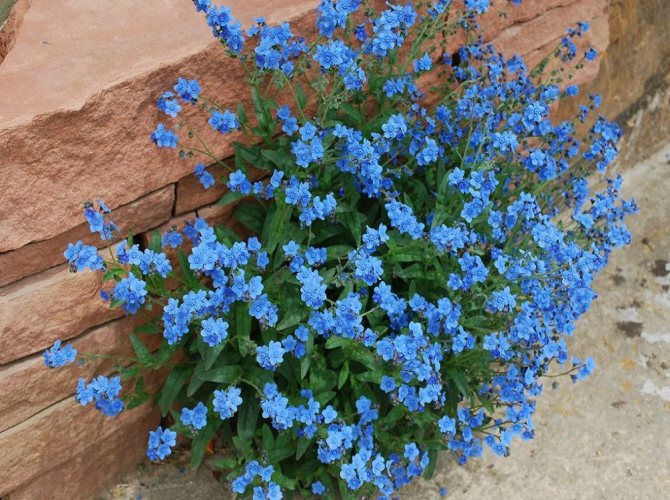

Blackroot pleasant
Blackroot Cretan. An annual plant with a height of 30-60 cm has a single erect shoot. At its base there are oval leaves 10-15 cm long. Sessile opposite leaves of a dark green color grow along the stem. All shoots are covered with a forked soft bristle. In August, small flowers bloom, collected in spiral panicles. The petals of young flowers are painted white, then they also turn blue or pink, and then light purple.
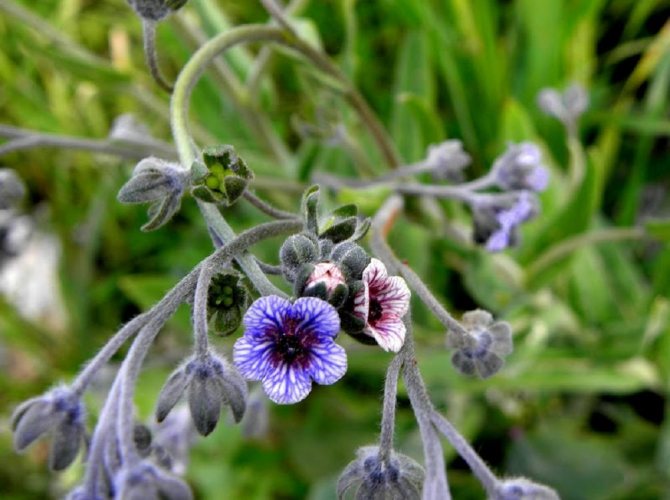

Blackroot Cretan
Germanic blackroot. The plant with bright green growth is covered with silvery soft hair. Lanceolate leaves are located along the entire length of the stem. At the top of the shoots, lilac-pink small flowers bloom in July.


Germanic blackroot
Traditional medicine recipes
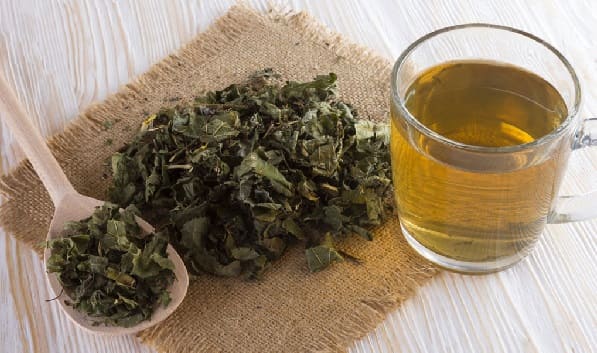

As a remedy for joint pain, black root can be used in decoction, ointment and tincture
There are several uses for the plant. The most popular is alcohol tincture, the addition of a decoction to the ointment, etc. Do not exceed dosages, do not change the proportions of ingredients. Dangerous for your health!
Decoction
The broth is used more often for joint pain, for the speedy healing of fractures. You need to take 5 teaspoons of plant leaves, grind them, pour 1 liter of hot water. This composition should be warmed up in a water bath for half an hour. Then it is recommended to filter it. You can add it to the bath, or simply moisten it with clean gauze, which then needs to be applied to the fracture site. Do not use the broth for more than a week.
Attention! Don't rely on just one remedy. For example, help your bones heal faster with more proven, established recipes. Eat more sesame seeds (it is extremely rich in calcium), and vitamin D3 will help the calcium to be absorbed, which, in turn, is abundant in fatty fish.
Infusion
Blackroot infusion on alcohol is described in folk medicine as a means for oral administration. Once again, we draw attention to the fact that the plant is considered poisonous, and such treatment is strictly forbidden to use without the knowledge of the doctor.
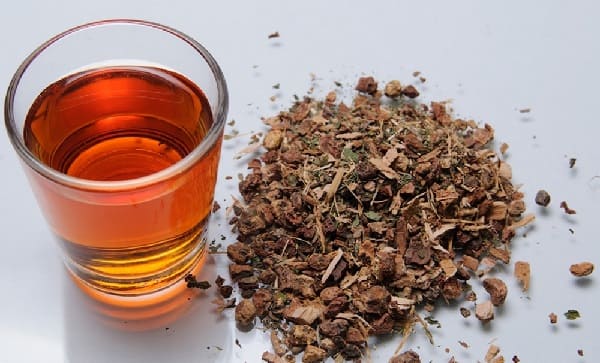

Preparation of alcoholic infusion: pour 250 ml of alcohol with 10 g of dried, pre-crushed root. You need to insist on the remedy for 2 weeks. This should be done at room temperature. Shake the contents periodically. After the infusion time has expired, strain the composition. It is recommended to take it in 5-10 drops per 1 tablespoon of water. Drink drops three times a day before meals. Do not forget that the tincture should be stored like any poisonous agent in a place well protected from the attention of children and animals.
Tincture
This refers to the infusion of parts of the plant on vodka. 1 glass of vodka for 5 g of dried root, boil these ingredients for 15 minutes (strictly in a sealed container). The product is infused for 12 hours, after which it is filtered. It is possible to use tincture on vodka strictly as an external remedy - they wash wounds with it, make lotions, add to medicinal baths.Use only sterile gauze as a material.
The juice
The juice is suggested by folk healers to drink when coughing and convulsions. Freshly squeezed weed juice must be diluted with water in a strict ratio of 1 to 30 (no less!). Consume a medicinal product 1 teaspoon three times a day for a week. There is another option: pour 1 teaspoon of dry crushed roots in 1 liter of hot water. It is necessary to defend the composition for 2 hours, after which it should be filtered. All is used for the same 1 teaspoon three times a day.
Ointment
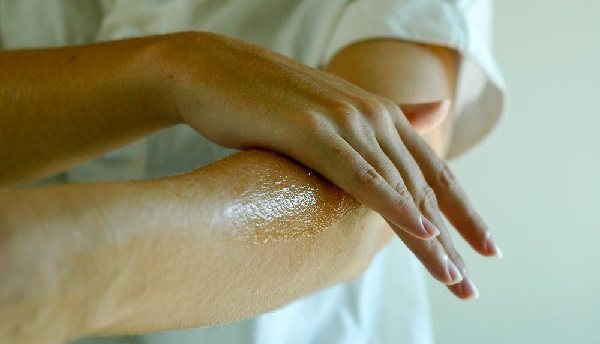

Blackroot ointment is an effective remedy for bruises.
The recipe for the ointment is also known as the most comfortable product for joint pain, wounds and bruises, non-healing trophic ulcers. In folk medicine, the recipe looks like this: 1 tablespoon of the root part of the weed should be mixed with 1 tablespoon of comfrey roots, as well as with 100 g of pork fat (previously melted). The resulting mixture must first be heated, and then rubbed into sore spots in a warm form.
Blackroot bath
It is believed that several sessions in such a bath, and broken bones will heal faster. First you need to prepare the broth. It is made from a mixture of leaves and roots. The proportions are as follows: 200 g of dry raw materials (crushed), 10 liters of hot clean water. If you are taking more water into the bathroom, the proportions can be increased relative to this volume.
Initially, the raw materials need to be poured with boiling water, boiled for 15 minutes over low heat, and infused for an hour. Be sure to strain it before use.
Growing
At home, black root is grown from seeds. They are collected from plants in the first or second year of life. Ripe, thorny seeds easily spill out onto the ground and cling to clothing. Plants are highly frost-resistant, so seeds can be sown directly into open ground. Crops are carried out in autumn to a depth of 2-3 cm. If necessary, the soil is periodically moistened.
In the spring, the first shoots of black root appear in the form of a rosette of long basal leaves. If necessary, plants can be transplanted with a large clod of soil. To make the seedling take root better, add "Kornevin" and "Ammonium nitrate" to the new planting hole.
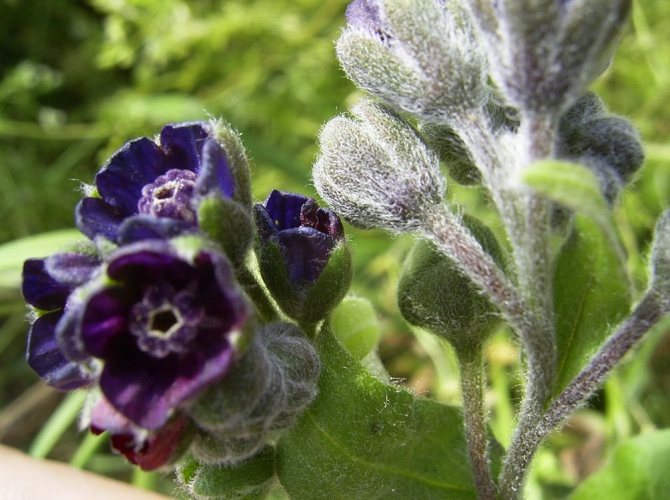

In landscape design
Bushes of decorative varieties of blackroot are suitable for decorating flower beds, decorating mixborders, and are also used in bright group plantings in the middle of the lawn. The plant can be grown not only outdoors, but also in containers on the balcony or terrace. In the garden, the best flower garden neighbors are verbena, aster, mattiola, snapdragon and echinacea. Dense inflorescences are used to make bouquets. In a vase, the black root will stand for more than two weeks.
The appearance of rats in the yard forces the owners to resort to all kinds of ways to deal with them.
In this long and not always successful war, people are armed with traps, poisoned baits, folk remedies and various purchased poisons. But few people know about the effectiveness that, due to its properties, the people have earned the name "rat-racer". What kind of herb is this, how to use it in case of invasion and other unwanted guests of the courtyard - we will talk about this later in the article.
Care rules
Blackroot is very unpretentious. Even on very hot days, it needs occasional watering. Plants are frost and drought tolerant, but love bright light. They are planted in open areas with fertile soil. Blackroot does not tolerate acidic soils. He needs earth with a neutral or alkaline reaction. For this, it is recommended to add lime to the ground. Before planting, the soil is dug up, large clods of earth are broken.
The plant is not afraid of sudden changes in temperature and drafts, however, it is recommended to tie up high growth so that it does not fall apart.
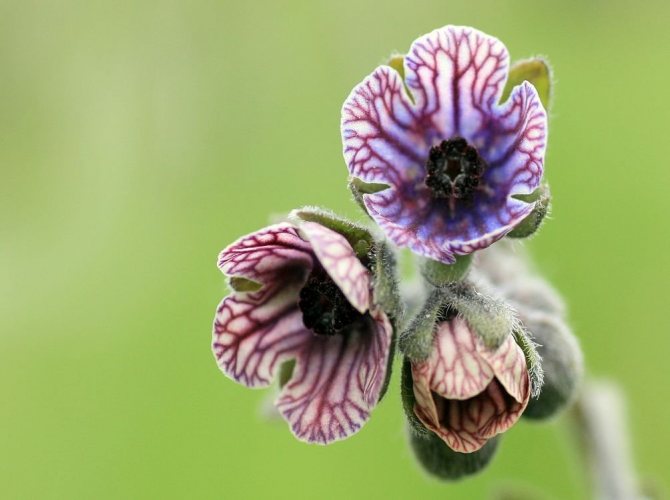

Cynoglossum tolerates drought better than soil flooding. It is rarely watered, no more than once a week in the absence of natural precipitation. Watering is especially important during the flowering period. Without it, the number of buds will decrease significantly.
They begin to feed the black root from the second year of life. It is enough in the spring and early summer to add a solution of organic or mineral fertilizer to the soil.
Blackroot bushes are good on their own and do not need pruning. The plant is characterized by the growth of inflorescences. That is, the stem gradually grows from above and new buds appear on it in a spiral.
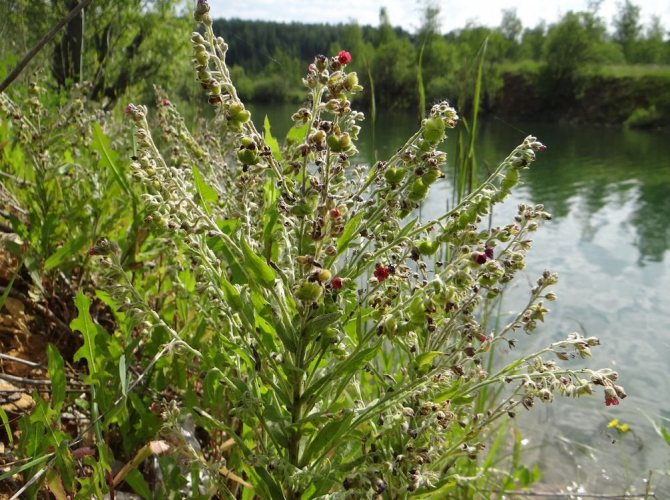

Blackroot does not suffer from attacks of parasites and plant diseases. Moreover, he himself is an effective insecticide (repels mosquitoes, moths, slugs and other pests) not only from himself, but also from other inhabitants of the garden.
What is useful
The described black root has a lot of positive properties, but it is most often used in the treatment of coughs, to relieve seizures, and also as an analgesic and emollient for burns, snake bites, and furunculous disease.
The presence of medicinal properties of some plants is confirmed by their biological names: chamomile, sage, lemon balm, soapwort, rosemary, wormwood, comfrey, peony, hellebore, verbena, veronica have species with the designation "medicinal".
It is impossible to ignore the positive characteristics of the weed when war on rodentsas it is a good remedy for driving out these small pests. Mice, rats and even moles simply do not tolerate the smell of fresh medicinal blackroot, and if you spread it in the habitats of animals, they will quickly run away from it, fleeing from suffocation.
At the summer cottage, with the help of this plant, you can fight weeds, moles and mole rats, for which it is enough just to scatter the black root under the crown of trees or water the soil under them with infusion. If you plant small plantings around the perimeter of the garden, mixed with Jerusalem artichoke and black beans (the plants go well in one place), then you can forget about the problem of small pests for many years.
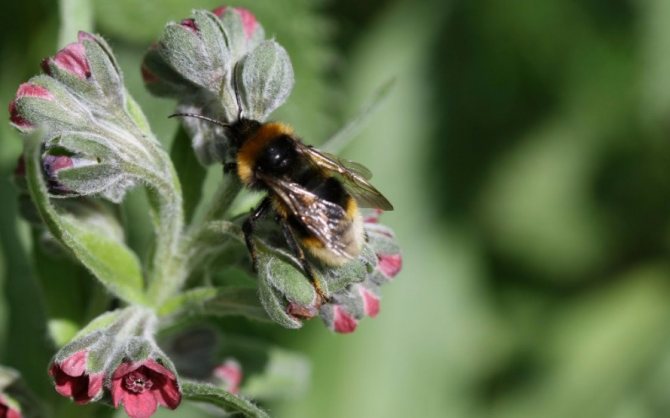

Among other things, this poisonous guest will be very useful near apiaries, as it is an excellent honey plant that can increase the quality of honey collection, and the roots and grass laid out in the winter dwelling of bees will drive rats and mice away from the hive.
Did you know? Our people love to come up with unusual and sometimes very funny names for plants. Therefore, if you hear "cat soap", "worm grass", "dog tongue" or "dog root", then know that we are talking about this particular plant.
Blackroot from pests
If a black root grows in the garden, then the number of raids from mice, rats and moles will be significantly reduced. This means that root crops and garden trees will not suffer significant damage. These animals do not tolerate the pungent smell of plant sap. In its fresh form, it is unpleasant for humans, but dried grass is not so fragrant for humans.
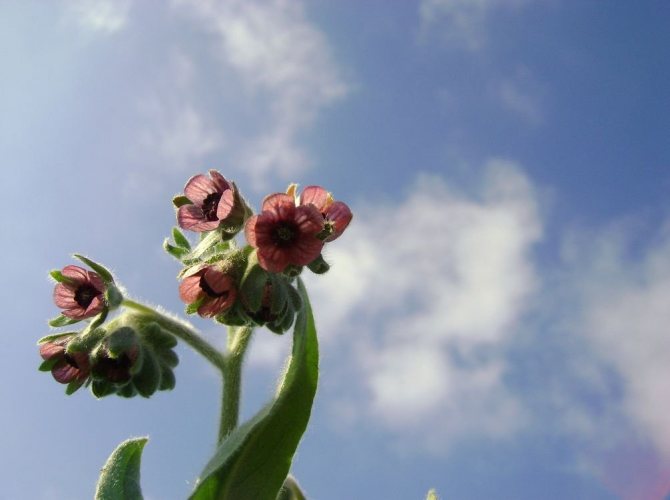

The shoots and roots of cynoglossum are laid out in basements, sheds and other rooms. The decoction from the plant can be added to the whitewash for the walls. In winter, bunches of dry grass are scattered near garden trees to protect their bark from rodents. To ward off moles, seeds are poured into holes.
Animals try to bypass the black root. If you have to be in direct contact with him, death occurs within a few minutes. Vapors of alkaloids have a nerve-paralytic effect.
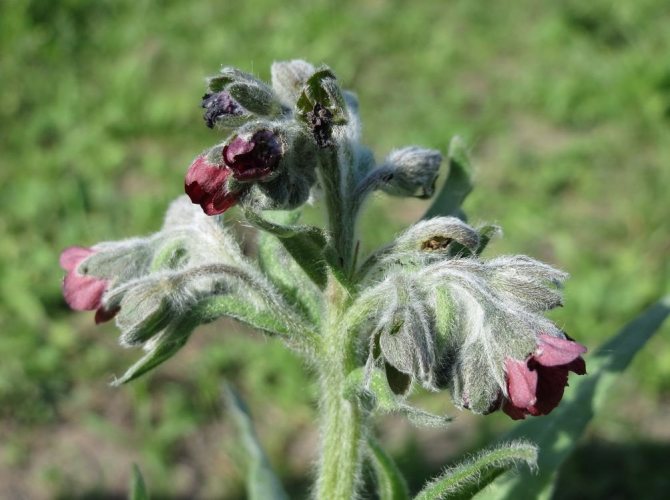

How does it affect mice, rats and moles?
Through the interaction of cinoglossin, consolididin, cinoglossin, heliosupin, glucoalkaloids and coumarins found in all parts of the weed, it has a lethal effect on rats and mice.When the active substances of the plant enter the body, they block the receptors, having a paralytic effect on the central nervous system. The result is multiple hemorrhages, muscle spasms, paralysis, and suffocation.
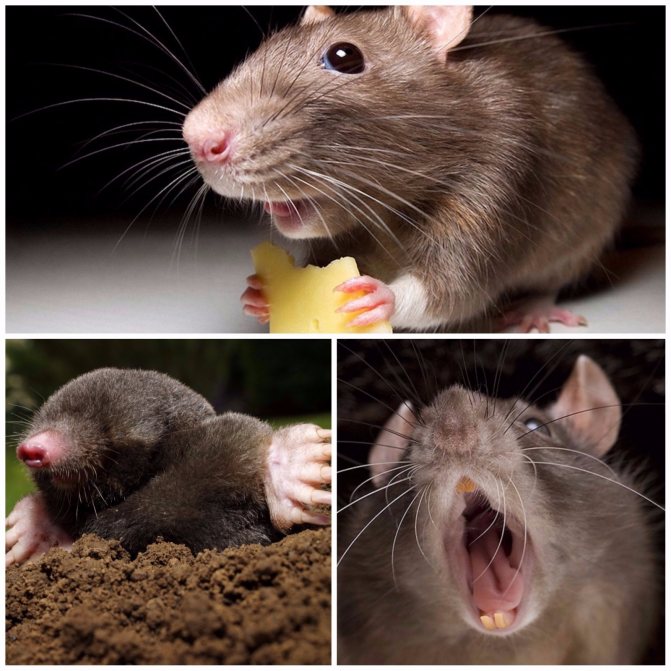

It is not necessary to swallow the herb to be fatal. The toxic effect is possible if you inhale the smell of dog honey. The coumarins contained in it contribute to the expansion of the arteries, which leads to dysfunction of the cardiovascular system. In large quantities, this fragrance will lead to inevitable death.
It is characteristic that you can get rid of unwanted robbers of basements and treasures with the help of any part of the plant: at least flowers and foliage, at least a root, which, by the way, is not black at all, but brown.
Important! The rhizome of the rat rat contains the largest amount of toxic substances. The smell itself scares off parasites. Therefore, experienced herbalists advise to always store dry raw materials in closets and cellars.
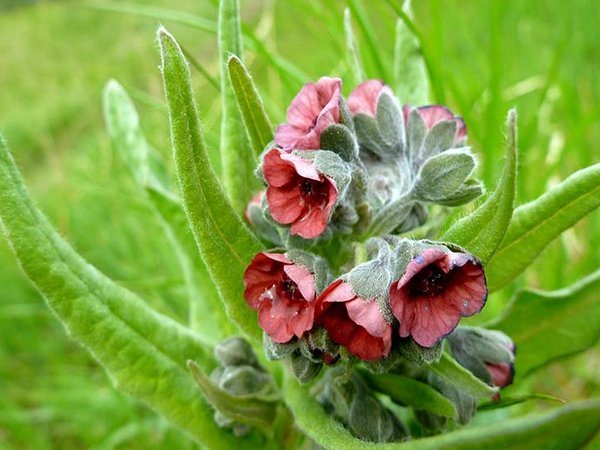

Medicinal properties
Blackroot juice contains resins, essential oils, alkaloids, coumarins, dyes and tannins. Rhizomes and shoots are harvested as medicinal raw materials. Preparations based on black root have antibacterial, sedative, anti-inflammatory, astringent and analgesic effects.
Ointments and lotions help get rid of burns, skin irritations and boils. In case of intestinal upset or inflammation, as well as in case of gastrointestinal oncological diseases, alcohol tinctures and decoctions are taken. From the broths, baths are made to dull pain in bone fractures and arthritis.
Distribution locations
Black carrots grow well on rocky and steppe slopes, limestones. A favorite growing place is the steppe strip. The homeland is considered to be Southern Europe, as well as Southwest Asia. Scorzonera is cultivated in all European countries, it can be found on the territory of Georgia and Azerbaijan.
The inhabitants of the Netherlands, France and some other countries began to grow this plant as a vegetable crop, starting from the end of the 16th century. In Russia, they speak of him only as a wild-growing representative of the flora that grows in the Caucasus. Producers, and even more so consumers, know little about it. Many take it as a root, which is not at all true. Residents of the United States and Western Europe admire the medicinal and nutritional qualities of the plant.
Danger to people and pets
Blackroot is a poisonous plant. Therefore, it can be dangerous to people and pets. Planting of plants is carried out away from the places where children play. It is unacceptable to use black root for food to people and livestock. The poison contained in the culture can cause serious complications. Therefore, blackroot should not be used in high dosages.
A limitation to the use of decoctions and infusions of cinoglossum is an allergic reaction to the components of the decoction. In case of signs of poisoning or irritation, you should immediately seek qualified assistance.
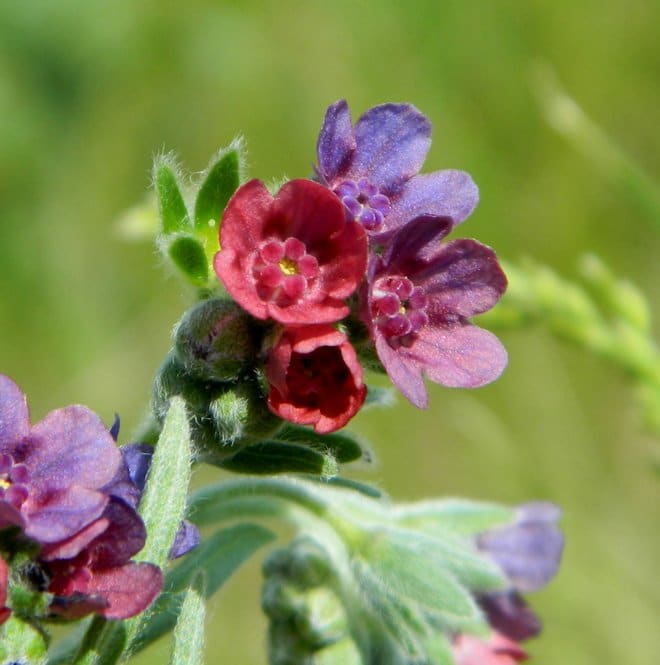

Description
Blackroot refers to one-, two- and perennial plants. With long-term development, it reaches a height of 1.0 and more meters, but remains grassy. Taproot, thick, dark with good branching, sufficiently provides the plant with the necessary moisture. The plant is completely pubescent, and the pubescence hairs grow from inconspicuous warts located throughout the plant's organs.


Blackroot medicinal, structure
The plant forms 2-3 straight stems, usually branched in the upper third. Leaves are elongated, lanceolate, up to 15-20 cm long, located alternately on the shoots. The upper and middle leaves are half-pressed to the stem, sessile. The stems gradually decrease towards the top. Lower basal long-petiolate. The underside of the leaf blade resembles felt due to the strong soft pubescence. By the time of flowering, the basal leaves die off.
The flowers are small, with a deep or open corolla, colored purple, red-blue, dirty red, violet, blue with white and pink tints. Corolla petals are bent, rounded, sometimes ovoid. The pedicels are pubescent. By ripening, the fruits lengthen up to 15 cm. Flowers in inflorescences of paniculate or cymotic curls. They are located in the axils of the leaves. Plants bloom in May-June.
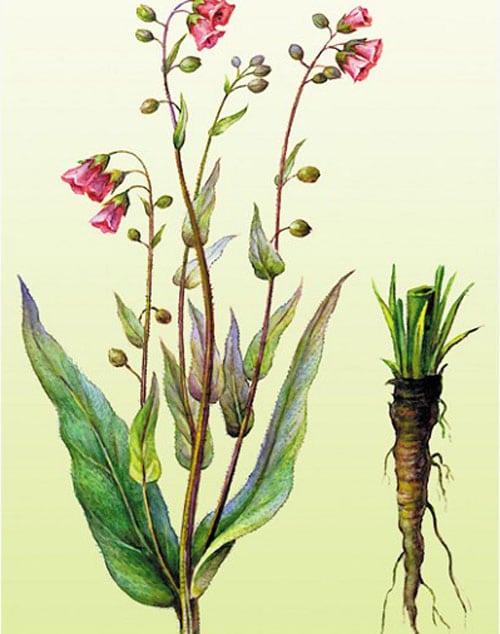

Blackroot structure
Fruits are nuts, covered with a prickly box. The fruits ripen in August - September. Mature seeds, pouring out of the cracking capsules, multiply by self-sowing. All parts of the plant have a repulsive odor. The plant is poisonous.
This page was last edited on 20 April 2018, at 08:15.
Cooking applications
In addition to the well-known medicinal properties, scorzonera is famous for its taste. Root vegetables have become widely used in cooking. They are used to prepare numerous healthy and at the same time quite tasty dishes. Black root is prepared like cauliflower or asparagus, used in vinaigrettes, as a seasoning for soups and used to make delicious sauces for meat. The goat will be very tasty if you fry it in oil, having removed the skin before that.
When starting to clean, you should do everything very carefully, as you can stain both hands and clothes. After cleaning the solid part, it should be immediately placed in a bowl of water diluted with vinegar. The black root can be eaten raw by rubbing and sprinkling with chopped parsley or other herbs. In this form, it is very tasty and resembles a cabbage stump.
The season for this beneficial plant begins in November. On the festive table, you can serve black root with the addition of morel sauce. Duck breast served with root and cheese sauce also looks good. You can't list all the dishes. It should be noted that the root crop of the plant is perfectly preserved even in cold winter, being under the snow. This makes it possible to have delicious dishes on your table all year round for everyone who has such a useful plant on the site.
In the plant kingdom there is an unpretentious plant of the borage family (Boraginaceae). In the family, a separate genus Chernokoren (Cynoglóssum L.) is distinguished, uniting more than 70 species. In the Russian Federation, 9 species are found and grow in small clumps, including the medicinal black root (Cynoglóssum officinále). It is a typical species for the genus and has more than 19 synonyms - dog root, dog tongue, scrofulous grass, helminthic grass, cat soap, night blindness, burdock, nutcracker, live grass, larkspur, lokhodeyka, red henbane and others. Synonyms and popular names indicate medicinal use and, at the same time, the toxicity of the plant.
Wintering
Blackroot is considered a frost-resistant shrub. Annual plants wither and dry up after the first frost. In this case, it is advised to pull up the shrub and give the soil a rest from the excess roots. Perennials require little preparation for winter.
After the fruits ripen and the first frosts appear, perennial representatives of the black root are cut off, leaving a distance of several centimeters above the surface. In the case of planting crops in places with severe winter frosts, they create an additional shelter for the culture.
A layer of spruce branches or dry grass is suitable as a cover. In addition, some gardeners use the cut above-ground part of the crop as a shelter. After the end of severe frosts, the culture is opened and the blackroot is allowed to prepare for new growth and flowering.
Testimonials
As a rule, everyone who used this herb to control rodents was satisfied. Both mice and rats, after contact with seeds, stem, root, or infusions, or broths, either died or left the plot or outbuildings.
As a rule, all parts of the plant are effective and act equally on moles, rodents and other pests that destroy green spaces. Starting the fight against rodents in the spring and continuing in the fall, it is possible to protect most of the crop during the winter.
The use of the plant is not accompanied by great difficulties, as well as the preparation of infusions and decoctions. The grass was called "rat rat race" for a reason, since the products prepared on its basis act quickly enough. Pests are mostly afraid to enter the territory where this herb is located. If they try something along with the ingredients of the blackroot, they will die.
At the same time, it is worth noting that the compositions with this herb are much less toxic than chemical preparations. Despite this, the formulations work flawlessly on many pests.
Mice are one of the most common rodent pests that can only be found on the territory of the Russian Federation. Such parasites take root in almost any conditions, but if they want to get enough they often make their way into residential buildings.
Breeding mice is quite difficult, so mankind has to come up with more and more new ways to combat rodents. Most often, parasites are poisoned with the help of special poisonous drugs, which are very dangerous to human health.
Therefore, many prefer more natural rodent repellents such as black root for mice.
How to use against caterpillars, aphids
In addition to its ratikidal characteristics, night blindness copes well with attacking harmful insects, exerting a deadly effect on them. Agrochemists recognize the effectiveness of the weed and recommend using it primarily for those owners who are afraid of pesticides in their gardens. After all, the result is in no way inferior to the known chemical insecticides.
If caterpillars, as well as aphid colonies, appear on the garden bed or in the flower garden, it is quite possible to save vegetation by sprinkling with black root infusion. To prepare it, you will need 2 tablespoons of crushed raw materials (preferably dry) per liter of boiling water. After filling the grass with water, cover it with a lid, wrap it in a warm towel and let it brew for several hours. Then pour into a spray bottle and spray liberally on the affected plant to drain the liquid from it.

